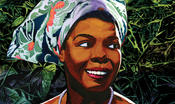text
Literature
The First 100 Days

When two sides fail to come together after a classroom election, the teacher institutes the 100 Days plan to try to keep the newly elected accountable and the remaining students apprised of what they can expect from their new president.
January 3, 2017


